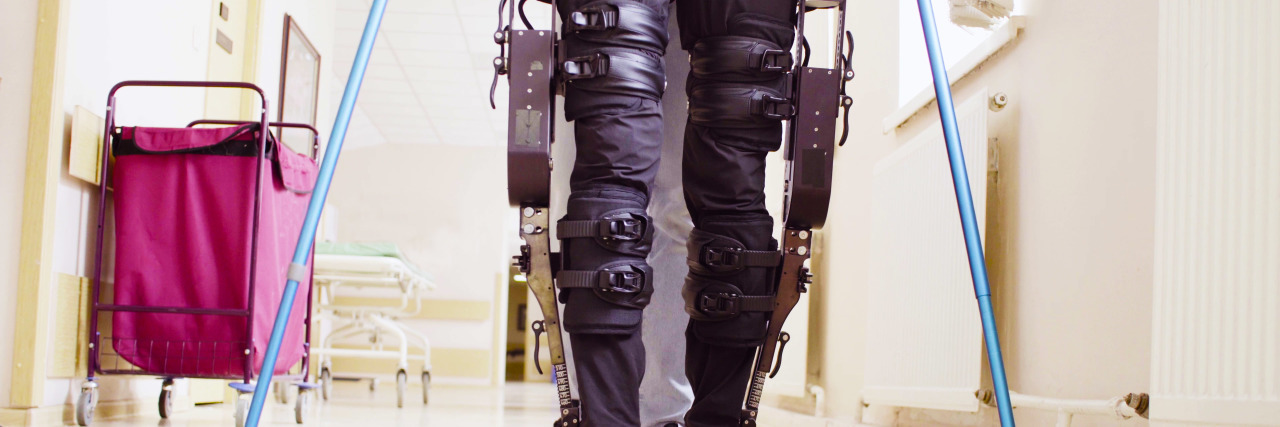by Sam Ray (Ally’s son), age 15
As a teen with facioscapulohumeral muscular dystrophy (FSHD), there are many things I wish I could do. I have the infantile-onset form of the disease, which means I have experienced symptoms since birth. Infantile onset is more severe than the adult-onset form of FSHD. While many people with the disease are able to walk and even run during their childhoods, I use a wheelchair and I am unable to raise my arms. My disease’s progression has forced me to give up many of the things I love, like playing the guitar, drums, soccer, skiing, and just being able to get in a friend’s car or walk into their house. But what if there was technology to enable me to walk, play sports and pursue my passion for music?
I started researching exoskeletons — wearable bionic suits — on the internet when I was around 11 years old. When I was given the opportunity to have an experience with the Make-A-Wish Foundation, I decided to go to an exoskeleton facility in San Francisco called EksoBionics. The technology is really amazing. You strap your feet, hips and legs into the suit and then use a special cane to control the leg and feet movements. Like magic, you are walking. When I visited EksoBionics, I met with their team and the vice president gave me a grand tour. They told me that the device is only approved for the rehabilitation of people with stroke and paraplegia, and they never thought it could be used by someone with FSHD. It opened my eyes to the possibilities it could bring to my life and to others with muscle diseases. I thought, “I need to let people know that this disease is completely life-altering and I need technology to be active again until there is a treatment.” I want these companies and engineers to know this technology would completely change my life and others with neuromuscular diseases.
People with multiple sclerosis and cerebral palsy, ALS, stroke, paralysis, and others who use a wheelchair could potentially benefit. It could give us freedom and a chance to live life with fewer restrictions. I do not remember what it feels like to step on soft grass or fluffy snow. I have a hard time remembering what it is like to look people in the eye and not have to look up at their chin. I am 5’8″ but it is hard to tell because I am always sitting down. Using an exoskeleton to stand and even walk could help people like me feel more like everyone else.
Another cool thing I saw when I was at the lab was an arm-assist machine called an EksoVest designed for mechanics, assembly line workers and other people who work with their arms over their heads. I was allowed to try the EksoVest and when I put it on I was able to raise my arms over my head, which is something I have not been able to do in a long time. If I had access to this vest every day, I could brush my own teeth, comb my own hair, feed myself, and perform many, many other everyday tasks the average person often takes for granted.
I know you are probably thinking these devices are very expensive. You are right, they are expensive — but so are electric wheelchairs and other durable medical equipment. And the more this technology is available, the lower the cost might become. These devices could hopefully eliminate the need for other expensive equipment or modifications. For example, modifying a vehicle so I can drive costs about $80,000. If I were able to drive with an exoskeleton suit, I might not need a specially modified vehicle.
Exoskeleton technology could change the future for disabled adults and kids. It is hard for me to understand why more disabled people and their families are not demanding that this technology be made available to us. It feels like I am hanging from a cliff and everyone is standing on the edge, looking down at me, but no one is reaching to offer a hand up.
Getty image by Chudakov2.

